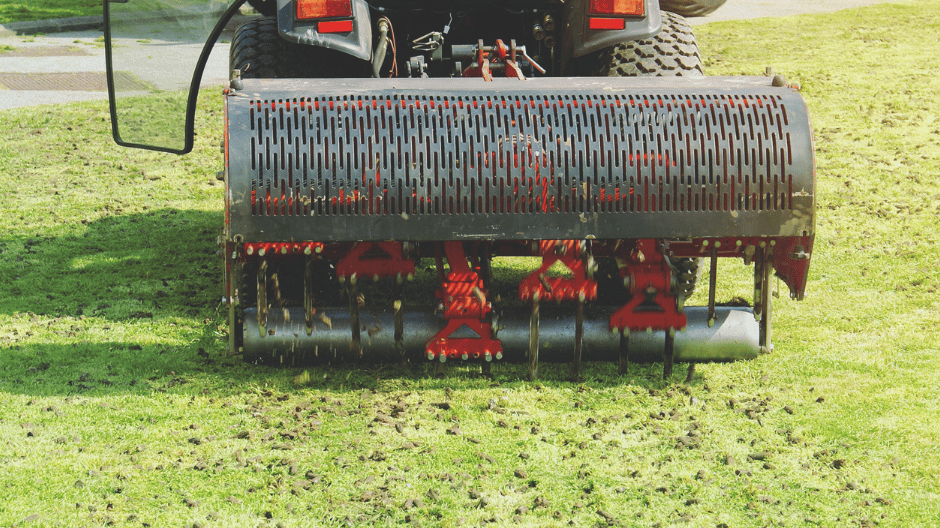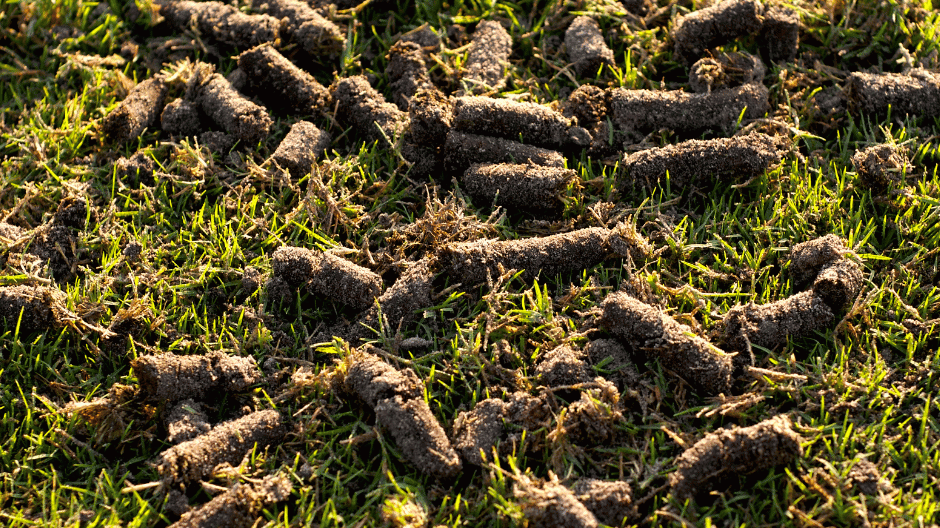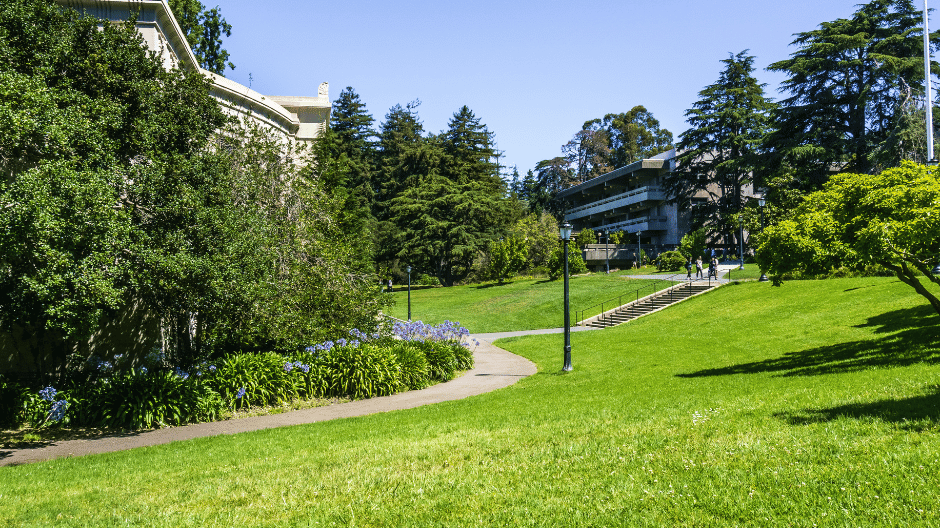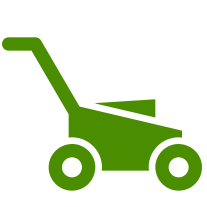Achieving a lush and healthy lawn in the Lehigh Valley can be a challenge, especially with the region's unique soil composition and climate. But fear not, for we have the ultimate guide to help you navigate the ins and outs of lawn aeration and achieve optimal health for your turf.
Aeration, a simple yet highly effective process, involves creating small holes in the ground to allow air, water, and nutrients to penetrate deep into the root zone of your grass. In this comprehensive guide, we will walk you through the best time to aerate your Lehigh Valley lawn, the benefits it brings, and the step-by-step process to ensure success.
Whether you're a seasoned lawn care enthusiast or just starting out, this guide will equip you with the knowledge and tools to transform your lawn into a vibrant, green paradise. So let's dive in and discover the secrets to aeration success in the Lehigh Valley!

What is lawn aeration?
Lawn aeration is the process of creating small holes in the soil to alleviate compaction and improve the exchange of air, water, and nutrients between the soil and the roots of your grass. Over time, the soil in your lawn can become compacted due to foot traffic, heavy machinery, or even just the natural settling of the ground. Compacted soil restricts the movement of air, water, and nutrients, leading to poor root development and overall turf health.
Aerating your lawn loosens the soil, allowing the roots to grow deeper and absorb nutrients more efficiently. There are various methods of lawn aeration, including core aeration, spike aeration, and liquid aeration. Each method has its own advantages and is suitable for different soil types and lawn conditions.
Proper aeration improves the overall health of your lawn, making it more resilient to drought, disease, and pests. It also enhances the effectiveness of fertilizers and promotes the growth of thick, lush grass.
Why is lawn aeration important?
Lawn aeration is a vital aspect of lawn care in the Lehigh Valley. The region's heavy clay soil and frequent rainfall can lead to compaction, which restricts the movement of air, water, and nutrients within the soil.
When the soil becomes compacted, the roots of your grass struggle to access the essential elements they need to thrive. This can result in weak, shallow roots and thin, patchy turf. By aerating your lawn, you create channels for air, water, and nutrients to reach the root zone, promoting a healthier and more vigorous lawn.
Aeration also helps to break up thatch, the layer of dead grass, roots, and debris that accumulates on the surface of your lawn. Excessive thatch can prevent water from reaching the soil and create an environment conducive to pests and disease. By aerating, you can reduce thatch buildup and improve the overall condition of your turf.
Signs that your Lehigh Valley lawn needs aeration
It's important to know when your lawn needs aeration to ensure that you're providing it with the care it requires. Here are some signs that your Lehigh Valley lawn may benefit from aeration:
1. **Compacted soil**: If your soil feels hard, dense, or difficult to penetrate, it's likely compacted. Compacted soil prevents water from draining properly and restricts the movement of air and nutrients.
2. **Water pooling**: If water sits on the surface of your lawn for an extended period after rainfall or irrigation, it indicates poor drainage, which can be a result of compacted soil.
3. **Thatch buildup**: Thatch is a layer of dead grass, roots, and debris that accumulates between the soil and the green vegetation. If the thatch layer is thicker than half an inch, it can impede the movement of air, water, and nutrients, necessitating aeration.
4. **Weak or sparse grass growth**: If your grass is struggling to grow, appears weak, or has bare patches, it may be a sign of compacted soil. Aerating can help to improve the root development and overall health of your grass.
5. **Heavy foot traffic**: Lawns that receive heavy foot traffic, such as those with children or pets playing on them regularly, are more prone to compaction. Regular aeration can alleviate the impact of foot traffic and maintain a healthy lawn.
When is the best time to aerate your lawn in the Lehigh Valley?
Timing is crucial when it comes to aerating your Lehigh Valley lawn. The ideal time for aeration depends on the type of grass you have and the specific conditions in your area.
For cool-season grasses, such as Kentucky bluegrass and perennial ryegrass, the best time to aerate is during the early spring or fall. These grasses are most actively growing during these seasons, and aerating at this time allows them to recover quickly and establish stronger roots.
Warm-season grasses, such as Bermuda grass and Zoysia grass, should be aerated during late spring or summer when they are in their peak growing season. This timing allows the grass to recover faster and take advantage of the increased airflow and nutrient absorption.
It's important to avoid aerating your lawn during periods of drought or extreme heat, as the stress on the grass can hinder its recovery. Similarly, aerating when the soil is too wet can result in excessive damage and compaction. Aim to aerate when the soil is slightly moist but not overly saturated.
How to prepare your lawn for aeration
Proper preparation is essential to ensure successful aeration. Here are the steps to prepare your Lehigh Valley lawn for aeration:
1. **Mow your lawn**: Begin by mowing your lawn to a shorter height than usual. This allows for better access to the soil and makes it easier for the aerator to penetrate the ground.
2. **Water your lawn**: Deeply water your lawn a day or two before aeration. Moist soil is easier to aerate, and it helps reduce stress on the grass during the process.
3. **Mark sprinkler heads and other obstacles**: Take note of any sprinkler heads, underground utilities, or other obstacles in your lawn. Mark them with flags or stakes to avoid damaging them during aeration.
4. **Remove debris**: Clear your lawn of any debris, such as sticks, stones, or toys, that could interfere with the aeration process. Removing these items ensures that the aerator can penetrate the soil evenly.
5. **Notify neighbors**: If you share a property line with neighbors, it's considerate to inform them of your planned aeration. This allows them to take any necessary precautions, such as closing windows or bringing in outdoor furniture.
By following these steps, you'll be well-prepared to aerate your Lehigh Valley lawn and set it up for success.

Different methods of lawn aeration
There are several methods of lawn aeration, each with its own advantages and best use cases. Understanding the different methods can help you choose the most suitable option for your Lehigh Valley lawn.
1. **Core Aeration**: Also known as plug aeration, core aeration is the most common and effective method. It involves using a machine called a core aerator to remove small plugs of soil from the ground. These plugs, typically 2-3 inches long, create channels for air, water, and nutrients to reach the roots.
2. **Spike Aeration**: Spike aeration involves using a machine or handheld tool to poke holes into the soil. While it can be effective for relieving compaction, spike aeration does not remove soil cores like core aeration. It's best suited for lawns with sandy or loamy soil that is not prone to compaction.
3. **Liquid Aeration**: Liquid aeration, also known as soil conditioning, is a newer method that involves applying a liquid product to the lawn. The product contains compounds that help break up compaction and improve soil structure. Liquid aeration is a convenient option for small or hard-to-reach areas, but it may not provide the same level of effectiveness as core aeration.
The choice of aeration method depends on factors such as soil type, lawn size, and personal preference. Core aeration is generally recommended for most lawns in the Lehigh Valley due to its effectiveness in relieving compaction and promoting healthy root growth.
DIY lawn aeration vs. hiring a professional
Deciding whether to aerate your lawn yourself or hire a professional depends on various factors, including your budget, time availability, and the size of your lawn.
DIY lawn aeration can be a cost-effective option if you have the necessary tools and experience. Renting a core aerator from a local equipment rental store is a common practice for homeowners who prefer to tackle the task themselves. However, it's important to familiarize yourself with the equipment and follow proper safety precautions to avoid injury.
Hiring a professional lawn care service can be beneficial if you have a large lawn or lack the time and expertise to aerate it yourself. Professional lawn care companies have the knowledge, experience, and specialized equipment to ensure proper aeration and achieve optimal results. They can also provide additional services, such as overseeding or fertilization, to enhance the health and appearance of your lawn.
Consider your specific needs and resources when deciding between DIY lawn aeration and hiring a professional. Ultimately, the goal is to aerate your Lehigh Valley lawn in a way that promotes its long-term health and vitality.

Tips for successful lawn aeration in the Lehigh Valley
To maximize the benefits of aeration and achieve optimal results for your Lehigh Valley lawn, consider the following tips:
1. **Aerate when the soil is slightly moist**: Aerate your lawn when the soil is slightly moist but not overly wet. This allows the aerator to penetrate the soil effectively without causing excessive damage.
2. **Overlap the passes**: When using a core aerator, make sure to overlap the passes by about 1-2 inches. This ensures that the entire lawn is adequately aerated and no areas are missed.
3. **Leave the soil plugs**: After core aeration, leave the soil plugs on the lawn. They will break down naturally over time, adding valuable organic matter back into the soil.
4. **Follow up with overseeding**: Consider overseeding your lawn after aeration to introduce new grass seed and fill in any bare or thin areas. This can further enhance the density and overall health of your turf.
5. **Monitor watering and fertilization**: After aerating, adjust your watering and fertilization practices to support the recovery and growth of your lawn. Deep, infrequent watering and a balanced fertilizer regimen can optimize the benefits of aeration.
By following these tips, you'll be well on your way to a successfully aerated Lehigh Valley lawn that thrives in the unique soil and climate conditions of the region.
Aftercare for your aerated lawn
After aerating your Lehigh Valley lawn, proper aftercare is essential to maximize the benefits and ensure its long-term health. Here are some key aftercare practices to follow:
1. **Water deeply**: Water your lawn deeply after aeration to help the grass roots establish and recover. Aim for about an inch of water per week, either from rainfall or irrigation.
2. **Avoid heavy foot traffic**: Minimize foot traffic on your lawn for a few weeks after aeration to allow the grass to recover. Walking on the freshly aerated soil can disrupt the healing process and negate the benefits of aeration.
3. **Continue regular lawn maintenance**: Resume your regular lawn care routine, including mowing, fertilizing, and weed control. However, adjust the mowing height slightly higher than usual to avoid stressing the newly aerated grass.
4. **Monitor and address any issues**: Keep a close eye on your aerated lawn for any signs of stress, disease, or weed infestation. Promptly address any issues that arise to prevent them from spreading and affecting the overall health of your turf.
5. **Schedule regular aeration**: Aeration is not a one-time fix. To maintain a healthy lawn in the Lehigh Valley, schedule regular aeration every 1-3 years, depending on the condition of your soil and the amount of foot traffic your lawn receives.
With proper aftercare, your aerated lawn will continue to thrive and provide you with a beautiful, healthy outdoor space.
Conclusion
Achieving a vibrant and healthy lawn in the Lehigh Valley is possible with the right knowledge and practices. Lawn aeration is a crucial step in maintaining optimal turf health, allowing air, water, and nutrients to reach the roots and promote vigorous growth.
By understanding the benefits of aeration, recognizing the signs that your lawn needs it, and following the appropriate timing and methods, you can transform your Lehigh Valley lawn into a lush, green paradise. Whether you choose to tackle the task yourself or hire a professional, the key is to prioritize the long-term health and vitality of your turf.
So take the first step and plan your lawn aeration journey in the Lehigh Valley. Your efforts will be rewarded with a lawn that not only looks stunning but also withstands the challenges of the region's soil and climate, bringing joy and satisfaction to your outdoor space. Happy aerating!
 Add Row
Add Row  Add
Add 



Write A Comment